
Grand Prix Legends is a computer racing simulator developed by Papyrus Design Group and published in 1998 by Sierra On-Line under the Sierra Sports banner. It simulates the 1967 Grand Prix season.

Red Baron II is a video game for the PC, developed by Dynamix and published by Sierra On-Line. It is the follow-up to the flight simulation Red Baron, released in 1990. Red Baron II was released in December 1997. A patch was released in 1998 that added support for 3D acceleration and renamed the game to Red Baron 3D. Red Baron 3D was also released as a retail product.

NBA Live 2000 is the 2000 installment of the NBA Live video game series. The cover features Tim Duncan of the San Antonio Spurs. The game was developed by EA Sports and released in 1999. Don Poier is the play-by-play announcer with Reggie Theus on color commentary. The game features Michael Jordan in his first official appearance in the series. The PC version of the game introduced EA's "Face in the Game" feature, allowing players to use custom facial photographs on created players. It was also the final NBA Live game released for Nintendo 64. NBA Live 2000 is followed by NBA Live 2001. A cancelled Game Boy Color version was in development by Handheld Games for THQ, but it was scrapped during testing.

Moto Racer, mislabeled as Moto Racer Gold, is an arcade style motorcycle racing game developed by Delphine Software International and published by Electronic Arts for Microsoft Windows and PlayStation. The game was originally to be published by BMG Interactive, but after BMG closed down its U.S. operations it sold the publication rights to Electronic Arts. Critics hailed the game as the first outstanding arcade-style racer to appear on PC, and the PlayStation version in turn was called a strong conversion in reviews.

Sentinel Returns is a video game developed by Hookstone, produced by No-Name Games and published by Sony in 1998, for Microsoft Windows and PlayStation. It is the sequel to The Sentinel by Geoff Crammond and features 651 levels, a multiplayer mode and a soundtrack composed by John Carpenter and arranged by Gary McKill.

Return to Krondor is a role-playing video game set in Raymond Feist's fictional fantasy setting of Midkemia. A sequel to 1993's Betrayal at Krondor, it was released for Windows on the PC in time for the 1998 Thanksgiving and Christmas season. Within the game, the player commands a group of heroes with different attributes, strengths, and weaknesses which the player may upgrade over the course of the game.

AH-64D Longbow is a realistic combat flight simulator of the AH-64D Apache Longbow attack helicopter. Released on June 3, 1996, for the PC, this simulation was developed at Origin Systems. AH-64D Longbow was the second simulator released under the Jane's Combat Simulators line from Electronic Arts.
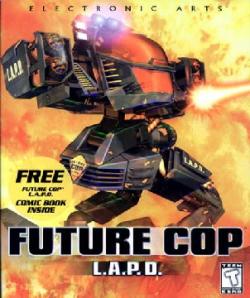
Future Cop: LAPD is a third-person shooter developed by EA Redwood Shores and published by Electronic Arts and released first for the PlayStation, then Mac OS and Microsoft Windows. Future Cop was originally developed as an installment of the Strike series.

Warhammer 40,000: Rites of War is a turn-based strategy game based on the Panzer General 2 engine by SSI. It is set in the fictional Warhammer 40,000 universe. It was produced by Games Workshop in 1999, and concerns the invasion of a Tyranid Hive fleet and the Eldar and Imperial efforts to defeat it. The game was re-released in 2015 on GOG.com.

European Air War is a combat flight simulator developed and published by MicroProse and published for Microsoft Windows in 1998. It is a sequel to 1942: The Pacific Air War. It simulates the Battle of Britain, and the Allied Air offensives in Western Europe during World War II in 1943–1945.
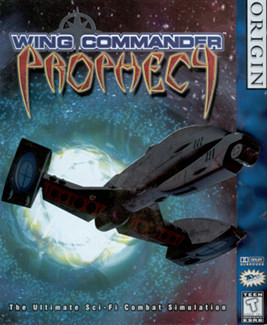
Wing Commander: Prophecy is the fifth installment in the Wing Commander science fiction space combat simulator franchise of computer games. The game was originally released in 1997 for Windows, produced by Origin Systems and distributed by Electronic Arts, and in 2003, a GBA conversion was produced by Italy-based Raylight Studios and distributed by Destination Software.
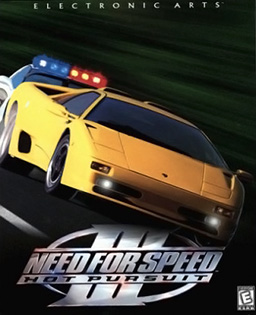
Need for Speed III: Hot Pursuit is a 1998 racing video game developed for PlayStation by EA Canada and Microsoft Windows by EA Seattle, and published by Electronic Arts. It is the third major installment in the Need for Speed franchise, incorporating police pursuits as a major part of gameplay. Hot Pursuit remains focused on racing using exotic sports cars, but features races that primarily take place in locations within North America, including varied settings and climates. Police AI is improved over the first game, utilizing several tactics to stop both the player and opponent. The PlayStation version was released on March 25, 1998, while the Windows version was released on October 12 the same year. The game received critical success, with praise for its graphics and customization options. It received a direct sequel in 2002 and a reboot in 2010.

Lands of Lore: Guardians of Destiny is a 1997 action role-playing game, second installment of the Lands of Lore series, a sequel to Lands of Lore: The Throne of Chaos. It brought about a drastic change in gameplay style from its predecessor, opting away from the original's D&D turn-based style in favor of more action elements. A sequel, Lands of Lore III, was released in 1999.

Jane's F-15, also known as simply F-15, is a combat flight simulator video game developed and released by Electronic Arts in 1998 for the PC. It models the McDonnell Douglas F-15E Strike Eagle. EA's 2000 Jane's F/A-18 used an improved version of F-15's game engine.

MageSlayer is an action video game released in 1997. It was based on the Vampire engine, developed by Raven Software, along with Take No Prisoners. The engine provides a top-down view with 2D sprites for the character and monsters in a full 3D environment with dynamic and colored lighting. The score was composed by Kevin Schilder. MageSlayer marked another Raven Software collaboration with the fantasy artist Brom, who produced the box cover artwork for the game.

Longbow 2 is the sequel to Jane's AH-64D Longbow from Jane's Combat Simulations. The game was developed by Origin Systems with executive producer Andy Hollis on board, and released by Electronic Arts on November 13, 1997.

Warlords III: Reign of Heroes is a computer wargame released in 1997, and the third release in the Warlords video game series. In 1998 it was followed by the expansion Warlords III: Darklords Rising.
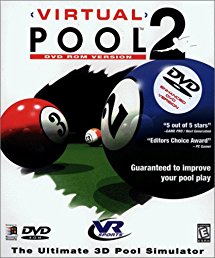
Virtual Pool 2 is a 3D, first-person sports simulation video game developed by Celeris and released by VR Sports on behalf of Interplay Productions in 1997. It is the third release of the Virtual Pool franchise of computer simulations of pool games developed by Celeris. VP2 is the second main series title in the Virtual Pool series, and would later be released alongside Virtual Pool 1.
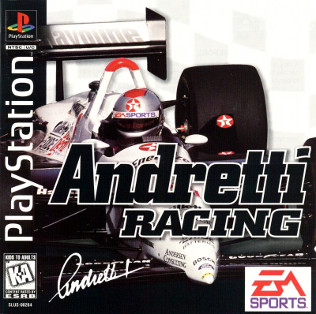
Andretti Racing is a video game developed by American studios High Score Productions and Stormfront Studios and published by EA Sports for the PlayStation and Sega Saturn in 1996, and for Windows in 1997. The game's title refers to legendary racing drivers Mario Andretti and Michael Andretti.

F1 Racing Simulation is a racing simulation game, developed for Microsoft Windows by Ubisoft in 1997. The game is based on the 1996 Formula One World Championship, and is the first of the Racing Simulation games made by Ubisoft, being the predecessor to Racing Simulation 2, which was released in 1998.



















